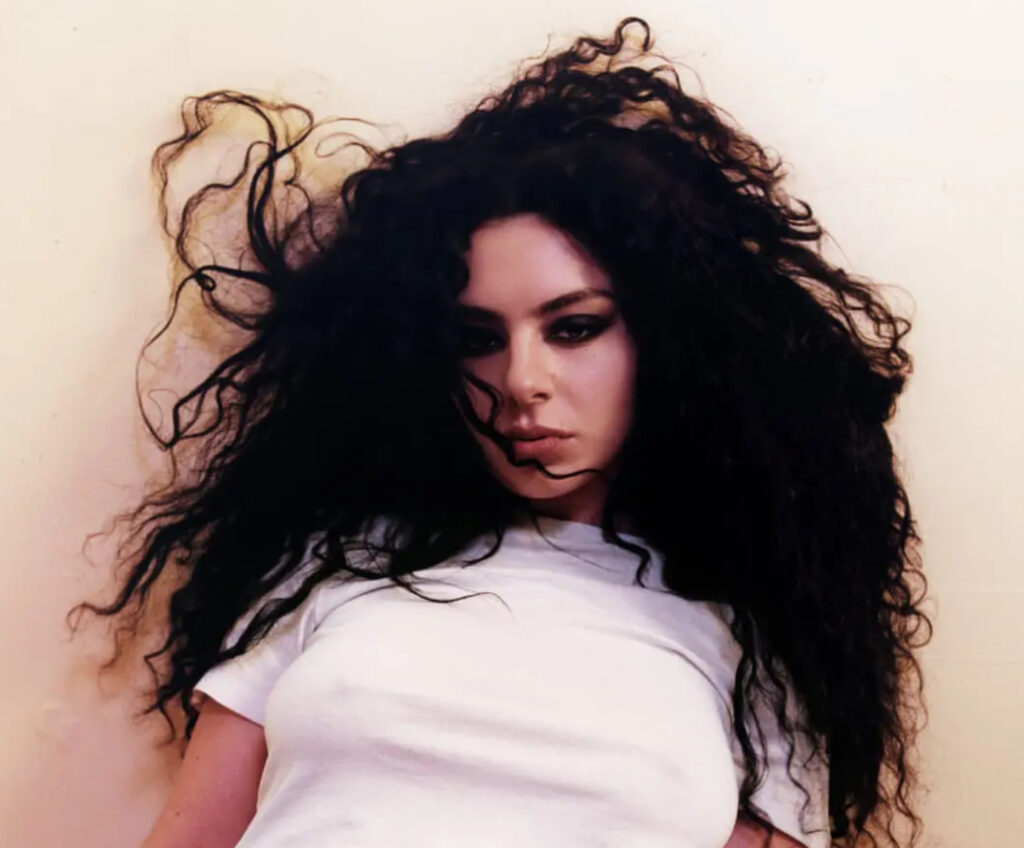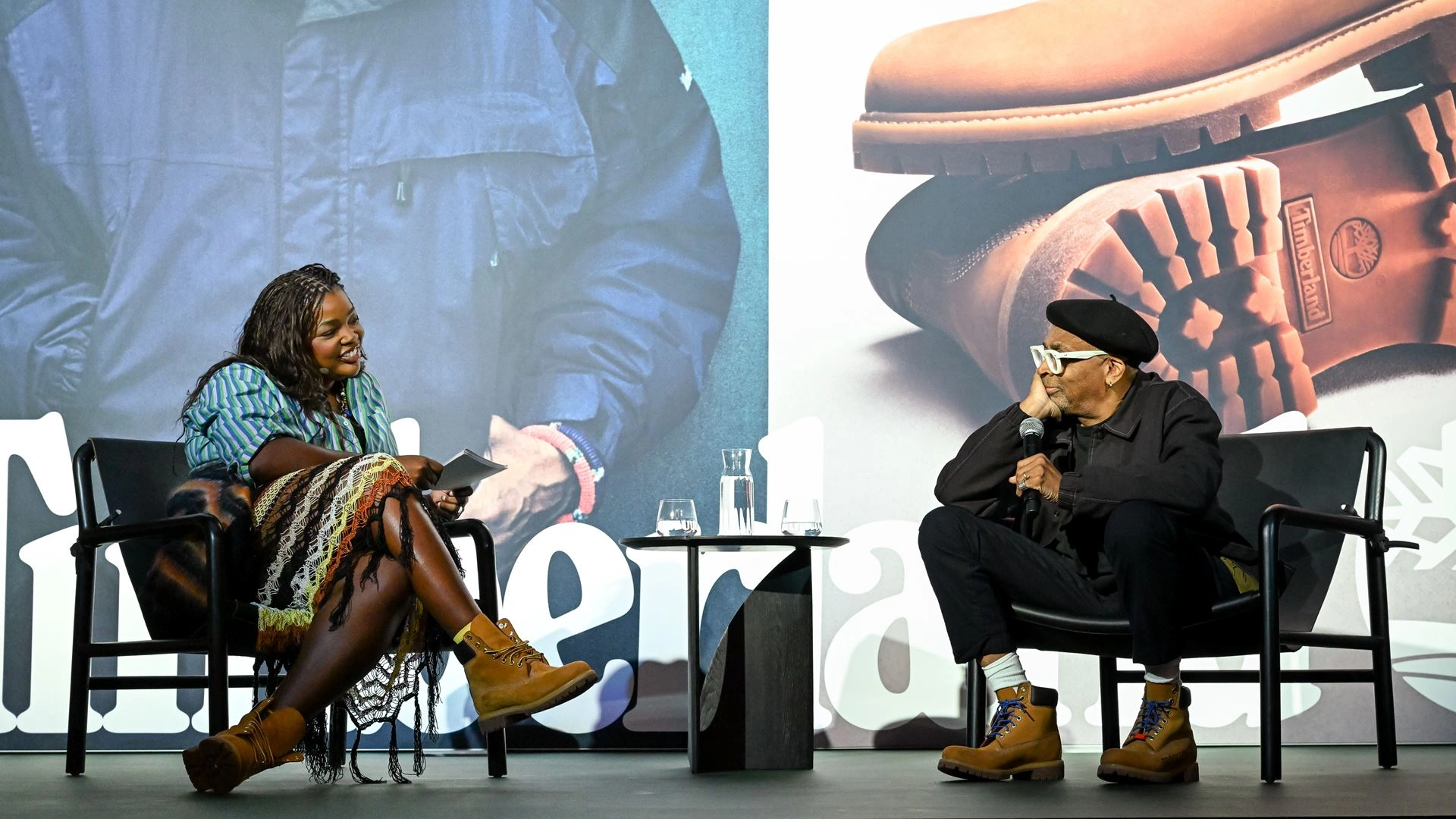The air was velvet-thick with anticipation. Above the Bois de Vincennes, the Parisian sky blushed a mellow gold, as if nature itself were preparing for something sacred. The We Love Green Festival, known for balancing hedonism with harmony, pulsed gently underfoot—solar-powered stages humming like distant beehives, the crowd murmuring with that particular reverence reserved for moments that already feel historic.
AIR’s equipment glistened under the first signs of stage light—sleek, analog, timeless. Their ambient prelude began like a ripple across calm water: soft, spatial, unmistakably French. And then—without warning, without fanfare—Charli XCX emerged like a punctuation mark in a sentence otherwise whispered. The crowd gasped as one.
She was dressed in translucent white, a gauzy homage to cherry blossoms, yet her hair—tangled, black, untamed—defied delicacy. Her expression was neither coy nor confident but carried something more haunting: an awareness that this was no ordinary stage, no throwaway setlist addition. This was communion.
The Setting: Where Music Meets the Earth
We Love Green was no stranger to profound moments. Conceived not just as a festival but a movement, it placed music against the backdrop of an ecological manifesto. The stages ran on renewable energy; waste bins stood like sculptures across the parklands, as meticulously arranged as any installation. Food came organic and local.
And here, where nature and sound interwove like braids, AIR was always going to feel at home. Their sonic textures—the long decays, the warm pads, the occasional analog stutter—felt like echoes of the woods around them. Nicolas Godin and Jean-Benoît Dunckel took the stage as if emerging from those very trees, their poise humble but sharp.
The audience, diverse and stylish, leaned in. AIR’s intro to Cherry Blossom Girl trickled out like perfume. Then Charli stepped into view, and the mood changed entirely.
Charli XCX: Refracted Through the Lens of AIR
To understand the weight of this collab , you have to appreciate contradiction. Charli XCX is chaotic precision: a futurist who builds from digital fragmentation, glitch, speed, audacity. Her music doesn’t stroll—it accelerates. AIR, by contrast, are patience incarnate, architects of mood, subtlety, space.
And yet, when Charli began to sing, it was as if she had always belonged there.
“I don’t think I’m any good at this…” she breathed, not with irony, but with reverence.
Gone was the club queen. This was a woman reclaiming softness. Her voice wrapped around the melody like silk on bone—delicate but structured, vulnerable without losing core strength. The original track’s quiet eroticism became something even more spectral with her delivery. Her performance was intimate but not performative, expressive yet controlled.
As she sang, she never once tried to outshine AIR. Instead, she nestled into their sonic bed, drawing out each word with the same restrained touch they applied to their synths. Her arms, often animated in solo sets, moved only sparingly—each gesture intentional, curved inward like petals.
The Crowd: Eyes Wide, Phones Raised, Mouths Agape
From the pit to the periphery, time seemed to freeze. Even the wind appeared to hush. The LED screens framed her and AIR like a surrealist painting. Smoke machines softened the edges. The crowd didn’t just listen—they dissolved into the sound.
Instagram, TikTok, and X (formerly Twitter) flooded in real-time:
- “Charli XCX + AIR = serotonin overload.”
- “Unexpected. Perfect. Transcendent.”
- “What genre is this? Doesn’t matter. It’s soul.”
One festival-goer tweeted a photo of their friend crying, captioned: “Didn’t think I’d weep at a synth-pop ballad. But here we are.”
Charli, after the performance, uploaded a muted video snippet of the moment—captioned with nothing but a cherry blossom emoji and a single ellipsis. Within minutes, it had racked up thousands of shares.
Bridging Two Aesthetics
There was something almost academic about the synergy. AIR, historically influenced by Vangelis, Serge Gainsbourg, and ‘60s cinematic melancholy, met Charli XCX—a disciple of SOPHIE, PC Music, and postmodern pop chaos.
But both acts, in their own ways, understood the deeper mechanics of sound. The way repetition could simulate memory. The way delay could mimic time lost. The way harmonics could feel like physical contact.
In this shared performance, AIR found new life in Charli’s elasticity, while she discovered an old soul within her.
Their rendition of Cherry Blossom Girl was not a remix. It was not a cover. It was a third thing—an original artifact born from mutual respect, arranged like origami from a single sheet of shared experience.
A Visual Ode to Stillness in Motion
This image—shot minutes before she ascended the stage—became its own emblem. It wasn’t just fashion or attitude; it was a portrait of artistic possession. The tension in her hair, like static trapped in curls. The blank background, as if no world existed yet, awaiting the story she was about to tell.
Later reposted by fans as “The calm before the dream,” it captured what made the moment surreal: the contrast between aesthetic fury and emotional stillness.
The Performance’s Emotional Blueprint
The beauty of Cherry Blossom Girl lies in its contradictions. The lyrics imply distance, shyness, affection never acted upon. AIR’s production drips with the quiet ache of unspoken desire.
Charli didn’t reinterpret the lyrics. She didn’t need to. What she did was feel them, in real time, and allow the vulnerability to surface without ego.
She let herself be a guest in someone else’s house, and in doing so, transformed it—redecorated it with a modern heartbreak that never tried to replace the old but layered upon it.
For AIR, too, the experience felt new. In interviews afterward, Godin mentioned being “genuinely taken aback” by the depth she brought, noting, “We’ve never heard our own song like that before.”
Cultural Echoes and Future Reverberations
In a musical climate of churn and disposability, moments like this matter. They become lodestars—true norths for those navigating the oversaturated now.
This collaboration reminded audiences what live music can still do: not just entertain, but reframe. Not just distract, but disarm.
If AIR are the ghosts of love songs past, and Charli XCX is the neon-lit navigator of heartbreaks future, then what occurred that night was the rare intersection—where past and future stood still, nodded to each other, and sang.
Closing Notes: More Than a Performance
By the time AIR’s set wound down and Charli had exited—leaving nothing but stardust and silence behind—the audience didn’t move. Not immediately. People lingered, not because they were waiting for more, but because they didn’t want to break whatever spell had been cast.
That’s how you know a moment transcends hype. When silence is louder than applause.
In an era where performances are content, this one was consecration. Not because of spectacle, but because of sincerity. It was a rare moment of musical clairvoyance—two acts staring into the soul of a single song and pulling it into the light, together.
Image
Somewhere in the city that night, speakers still hummed. Taxis whispered it through aux cords. Fans replayed the footage on cracked phone screens under soft hotel lamps.
And among them, one truth remained: music, when sincere, when fearless, when collaborative in the truest sense, doesn’t need genre, decade, or even words to explain it.
It simply lingers.
Let me know if you’d like this formatted into a downloadable PDF, printed zine layout, or web article mockup with design notes.
No comments yet.








